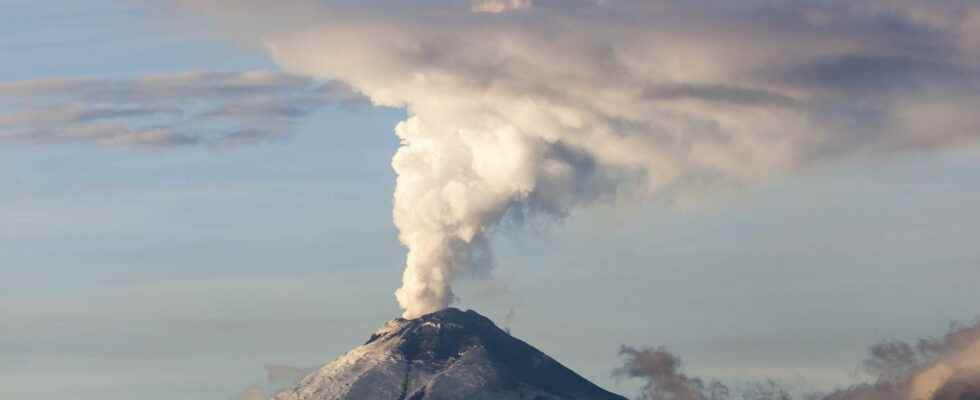A winter volcanic corresponds to a period of significant drop in atmospheric temperature caused by certain large volcanic eruptions.
The activity of volcanoes is indeed associated with important emissions of gas and fine volcanic particles, such as ash, which will accumulate in the atmosphere. Depending on the type of eruption and its importance, the quantities released can be enormous and have a significant impact on the meteorology of the region, even on the climate global of the planet. We then speak of volcanic forcing of the climate.
The severity of the impact, and in particular its geographical extension, will notably depend on the atmospheric layers affected by the volcanic emissions. Small to medium rashes will usually only affect the troposphere, i.e. the lowest layer of the atmosphere, resulting in a very limited climatic effect, both geographically and temporally. Large and powerful eruptions can affect the stratosphere, with much longer effects and potentially affecting the entire globe. Some particularly large eruptions can thus give rise to a volcanic winter.
A temporary cooling of the climate
This phenomenon is characterized by a cooling of the climate over a few months or years. It is linked to the presence of certain volcanic gases in the atmosphere, in particular carbon dioxide. sulfur. These gases will react and form aerosols that will impact the transmission of solar radiation. In contact with the water vapor present in the atmosphere, the sulfur dioxide will thus formsulfuric acid. This aerosol will then increase the opacity of the atmosphere, reducing the amount of solar radiation reaching the surface of the Earth. Volcanic dust suspended in the atmosphere will also participate in this process, which will lead to a cooling of a few degrees and the occurrence of a volcanic winter.
This climatic effect must however be balanced by several factors. The occurrence of a volcanic winter is highly dependent on the quantity of gas and ash emitted into the atmosphere and the nature of these emissions. The period of the year during which an eruption occurs is also to be considered, as well as the geographical position of the volcano. Atmospheric currents vary in fact during the seasons and are not the same depending on the latitude. They are notably more important in the equatorial zone, where they will have the ability to more effectively disperse aerosols in the atmosphere. A violent eruption occurring in this area will therefore have a more global effect than an eruption located at a higher latitude. Finally, volcanic winters are generally very limited in time, the aerosols falling after a few months.
If it is clear that aerosols of volcanic origin can produce a drop in temperatures, on the other hand their presence in very large quantities in the upper atmosphere can have the opposite effect. Their presence in the stratosphere can thus, in the long run, create a greenhouse effect and a rise in temperatures. However, this phenomenon only occurs in the case of super-eruptions, which last several thousand or even millions of years. In this case, the volcanic winter is quickly followed by a global warming overall. Some mass extinctions would thus be associated with a dramatic global warming caused by phases eruptive major and cataclysmic.
Examples of Volcanic Winters
The most recent volcanic winter occurred following the explosion of Mount Pinatubo in the Philippines in 1991. The eruption of this stratovolcano led to an overall drop in temperatures for two to three years.
Before that, we can cite the eruption of Krakatoa (Indonesia) in 1883. The four years that followed this terrible explosion were indeed particularly cold, with in particular heavy snowfalls all over the world, including in Indonesia in 1888!
In 1816, the United States experienced a ” year without summer », following the eruption of Tambora in Indonesia a year earlier. This climatic disaster caused a major loss of the year’s crops in Europe.
Over the course of human history, several episodes of famine have thus been attributed to volcanic winters, particularly in connection with the eruption of Samalas in 1257 and Eldgjá in 934. Volcanic winters being very limited in time, it however, it becomes difficult to trace them back to earlier periods. The clues are generally to be found in ancient texts, which relate episodes of abnormal cold and which can be correlated to major volcanic eruptions. This is the case, for example, of the Etna eruption in the year -44, recounted by Plutarch, who describes a “darkening of the light of the sun” for a whole year, the “coolness of the atmosphere” preventing the ripening of the fruits.
You will also be interested
Interested in what you just read?
